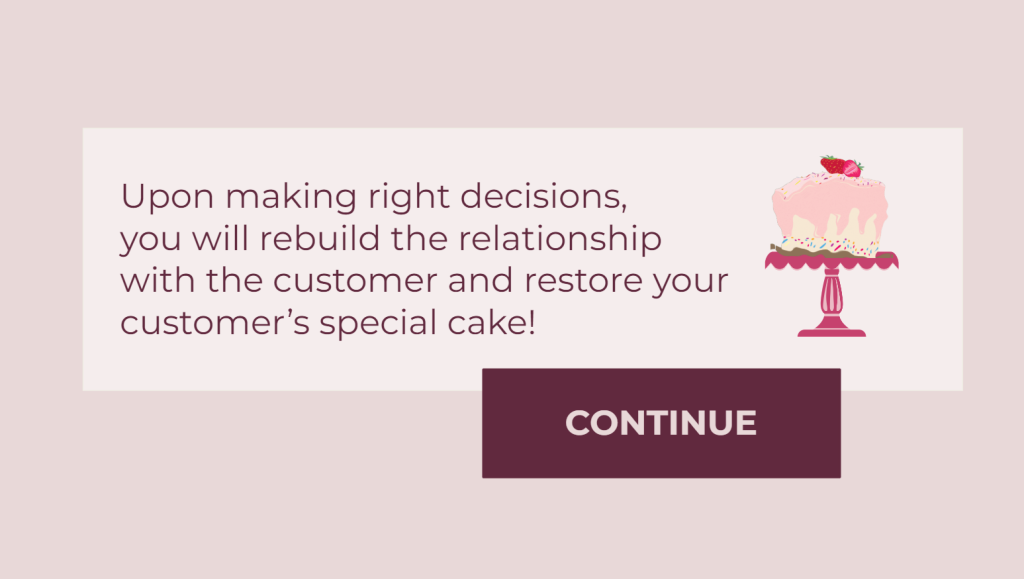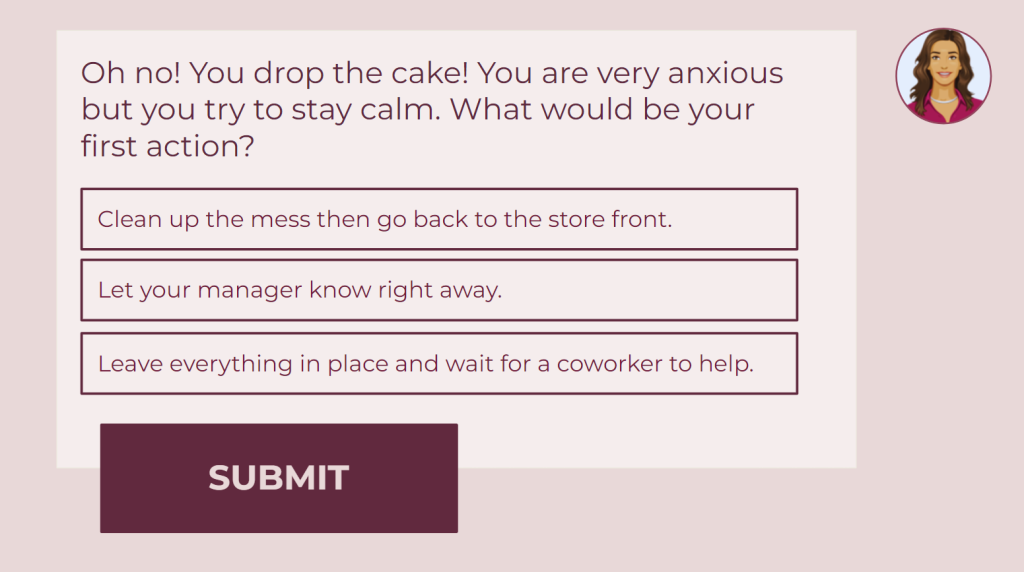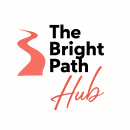✦ The Cake Shop Project ✦

Enhancing Customer Experience
The Cake Shop Project was developed to address and improve customer service strategies for a hypothetical local bakery, focusing on enhancing the overall customer experience and ensuring a smooth operation from order placement to delivery.
Customer Service Recovery
a Scenario-based eLearning Experience
Audience: New and seasonal instructors and sales associates in a custom cake bakery.
Project Overview
Such a project would involve a thorough analysis of a typical bakery customer service processes and identifying key areas for improvement. With The Cake Shop, the goal was to create a training module that could effectively guide employees in handling customer interactions, with a focus on service recovery and delivering exceptional service.”
Typical Project Process
1- Research: I typically start with an in-depth analysis, as demonstrated with a hypothetical case of The Cake Shop, where I would conduct interviews with staff and gather customer feedback through surveys.
2- Design and Development: Following the research phase, I design detailed training modules tailored to the findings, incorporating interactive scenarios and step-by-step guides to address common challenges, such as those related to customer service.
3- Implementation: The training modules are then implemented within the relevant program, such as being integrated into The Cake Shop’s hypothetical staff onboarding process.”
Problem and Solution
In a scenario with The Cake Shop, a large and expanding bakery business, the issue lies with new and seasonal staff who often fail to follow up with customers when their cake orders are accidentally damaged. This oversight would frequently result in managers stepping in to handle customer service recovery calls, leading to increased frustration and lost customers due to the sales associates’ lack of accountability and promptness. Maintaining strong customer relationships and providing positive experiences would be crucial to the business’s success.
The new and seasonal staff would also lack experience in customer service recovery and might regularly fail to document incidents or adjust inventory to reflect the loss. To address these challenges, I would recommend scenario-based eLearning. This training would allow staff to make decisions in a risk-free environment, showing them the realistic consequences of common mistakes. Practicing the correct actions in these scenarios would help them avoid errors in real-world situations.
The client would recognize that the eLearning experience could address their concerns and agree to proceed with the solution.
Process
After identifying the primary issues, I would consult with a Subject Matter Expert (SME) to define the goal and outline the specific steps staff should take after accidentally damaging a customer’s order. With this information, I would develop an action map and create a text-based storyboard.
I would then create visual mockups for the scenario-based eLearning experience using Adobe XD and develop visual assets in Adobe Illustrator. I would present a visual storyboard to demonstrate how text and images would integrate. Following the client’s approval of an interactive prototype developed in Articulate Storyline 360, I would fully develop the project in the same platform.
To monitor the learner experience and collect data, I would implement custom xAPI to track choices and determine if the learner utilized available resources, such as a mentor, throughout the scenario. This data would help illustrate where staff struggled most with customer service recovery.
Action Map
I would develop an action map to define the overall goal. I would guide the process of identifying the actions that staff would need to take to successfully navigate a customer service recovery experience.
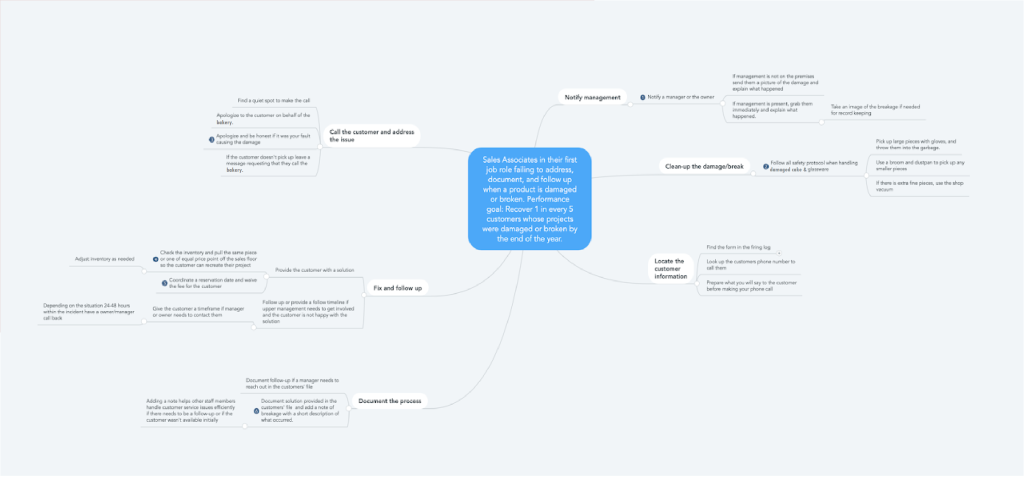
I would begin by prioritizing key actions that the instructor and associate must perform to ensure a successful experience. Once these actions were finalized, the client would approve them for inclusion in the eLearning experience, allowing me to proceed with creating a text-based storyboard.
Text-based Storyboard
After the action map was approved and specific actions were defined, I would collaborate closely with the expert to develop a text-based storyboard that outlines the choices and consequences within the scenario. Each decision point in the scenario would present the learner with three options: a correct choice and two distractors.
If the learner selects the correct action, they would see the positive consequence and continue progressing through the scenario. If a wrong action is chosen, the learner would encounter the real-life consequences of that decision and be provided with a “try again” button that leads back to the question. Additionally, the scenario would include an option for the learner to seek guidance from a mentor at any point before making their choice for each step.
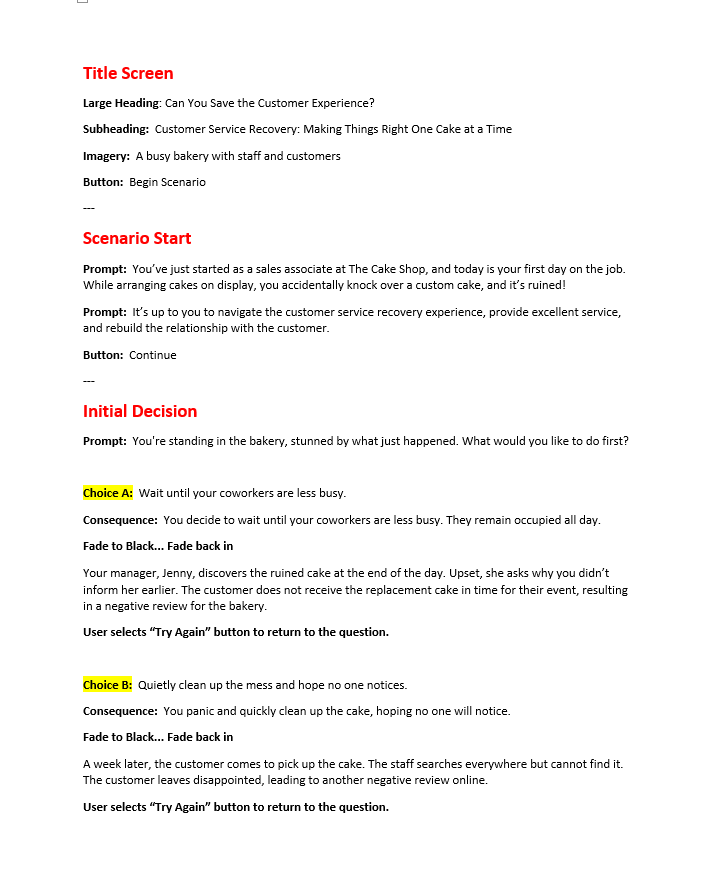

Visual Mockups: Adobe XD – Adobe Illustrator and Canva
After the client approves the text-based storyboard, I would move into creating mockups for the scenario-based eLearning. The client and I would discuss using their brand’s color schemes with additional supporting colors, typefaces, and visual assets.
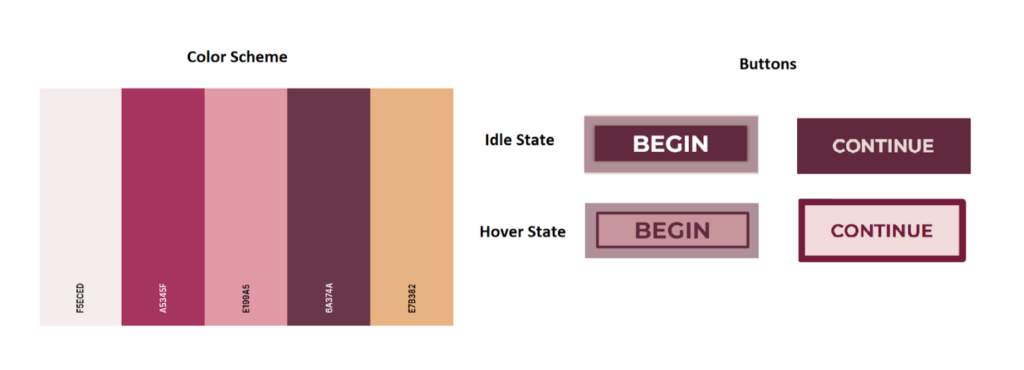
I used Adobe Illustrator and Canva to manipulate various assets and to create custom visuals for the project. I created visuals that were full-slide, supporting the question-slides and one for the mentor-slide. I also created the mentor button and the damaged custom cake
Tools Used
The Cake Shop Project was created using the following tools:
- Articulate Storyline 360
- Adobe Illustrator and Canva for visual design
- Microsoft Word for content development
- Google Forms for customer feedback collection
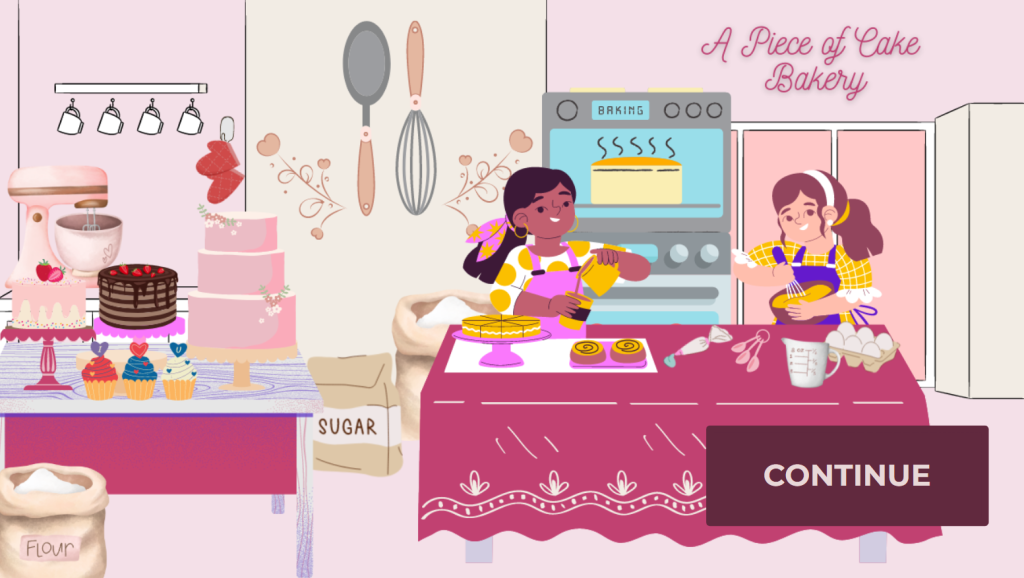
Full-slide Visual Asset

Mentor Visual Asset
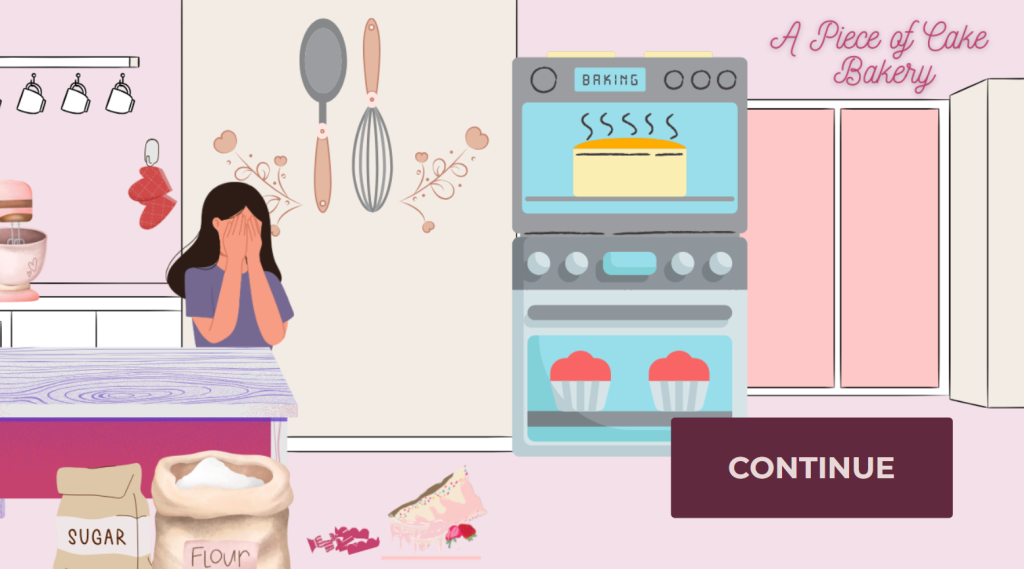
Full-slide Accident Asset
Question-slide Visual Asset
I moved on to Adobe XD to create layouts for opening slides, prompts, questions, and the mentor slides. Once designs were agreed upon with the client’s feedback, I laid out the rest of the visuals with the slides.
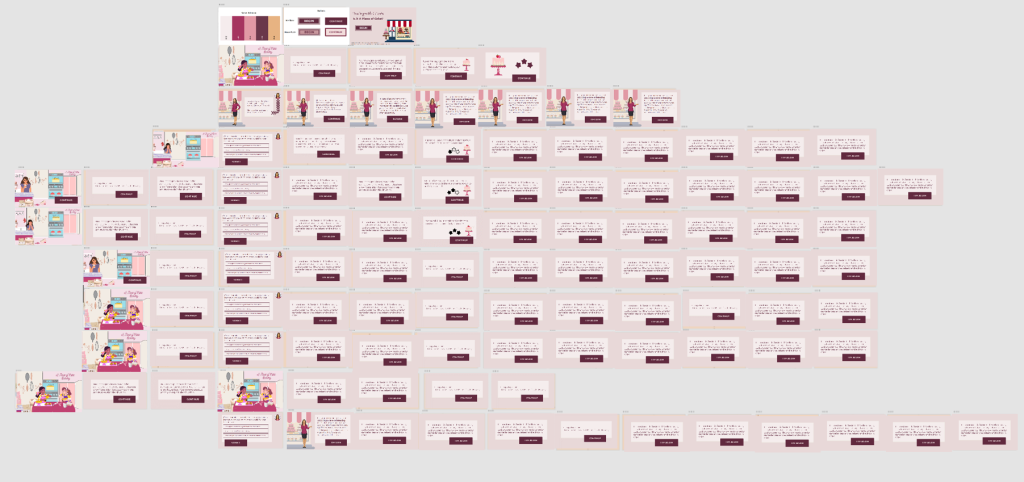
Throughout the scenario, there are intermittent scenes of visuals to help reinforce the story. I intentionally added dash lines to create visual movement within the slides, which the client also loved.
Interactive Prototype
For this client project, I used Articulate Storyline 360 to create the interactive prototype, which I had planned out visually in Adobe XD beforehand. The prototype consisted of the opening screen, an introduction to the scenario in which the learner meets the mentor, and the first question with correct and incorrect prompts.
Once the project was fully developed in Storyline, the client would be able to review the project.
The learner can choose to “restart” or “end” the experience.


Proudly powered by WordPress
